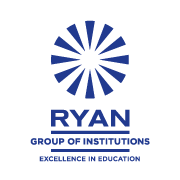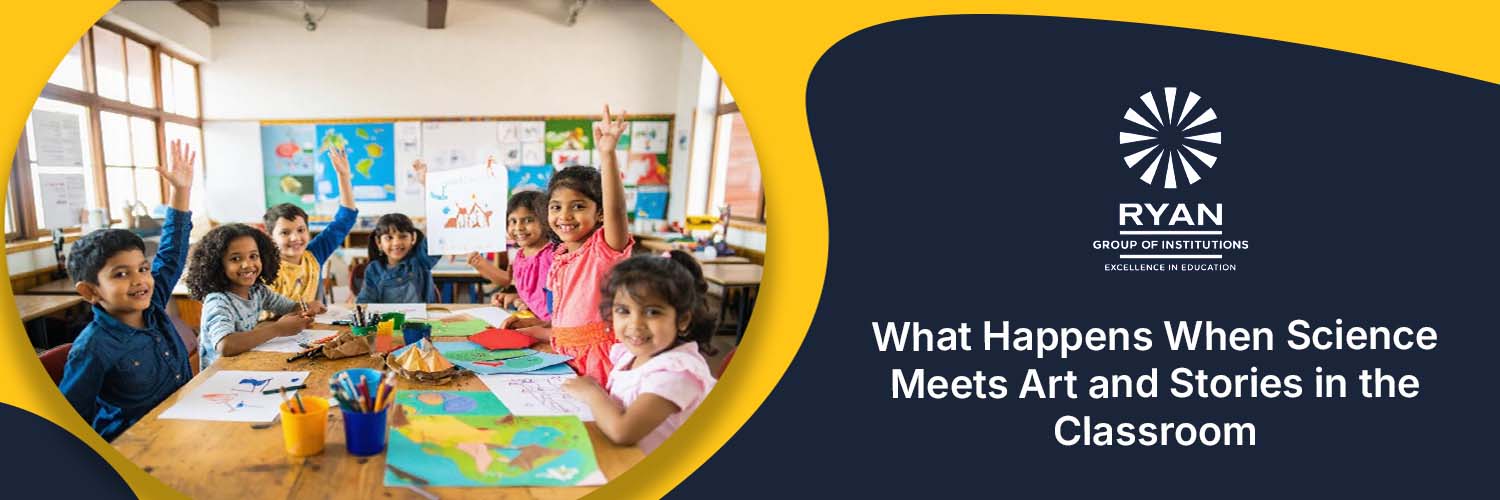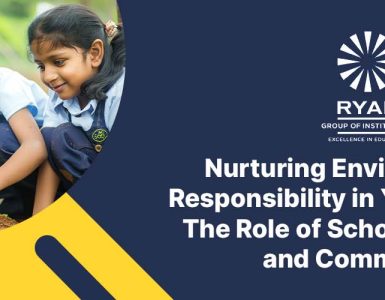Traditional classroom learning often divides subjects into neat, isolated boxes. Science in one period, art in another, and language or literature somewhere in between. But real life doesn’t work that way, and neither does the human brain. That’s where interdisciplinary learning comes in. It is a powerful approach that weaves together science, art, and storytelling to create richer, more efficient learning experiences for students of all ages.
What Is Interdisciplinary Learning?
Interdisciplinary learning means integrating knowledge and methods from different disciplines to explore a theme, issue, or problem. Instead of studying each subject in isolation, students apply insights from multiple fields to deepen their understanding and build more meaningful connections.
In simple terms, it’s the difference between learning about photosynthesis in a textbook and exploring it by painting the carbon cycle, acting out the plant’s journey through seasons, or writing a story from the point of view of a leaf.
Why It Works: The Brain Loves Connections
When learners engage with a topic through multiple disciplines, they activate different regions of the brain. Science encourages logical reasoning and analysis. Art promotes creativity and visual thinking. Storytelling builds empathy and narrative structure. When these areas work together, information is retained more effectively, and students develop a stronger grasp of concepts.
For example:
- A student learning about climate change might create an illustrated comic strip showing the impact on different animal species (science + art + storytelling).
- Exploring sound waves by building simple instruments, drawing wave patterns, and writing poems about music engages sensory, logical, and emotional aspects of learning.
Science Meets Art: Making the Abstract Visible
Science often deals with complex, abstract ideas that can be hard to visualize—like atoms, galaxies, or ecosystems. Art bridges that gap by making the invisible visible.
For younger students, drawing the water cycle or creating models of the solar system helps translate abstract concepts into tangible ones. For older learners, data visualization, infographics, and creative presentations make scientific findings more accessible—and often more memorable.
Stories as Learning Anchors
Humans are wired for stories. When scientific facts or historical events are wrapped in narrative form, retention soars. Stories provide context, emotion, and meaning—elements that pure data or rote learning often lack.
- A story about the discovery of penicillin not only teaches biology but also resilience and curiosity.
- A narrative set during the Industrial Revolution can teach both history and physics (steam power, machines), layered with human impact.
By embedding scientific content within stories, students don’t just memorize—they empathize, reflect, and remember.
Real Classroom Applications
Teachers and educators around the world are experimenting with interdisciplinary approaches:
- STEAM Projects (Science, Technology, Engineering, Arts, Mathematics): Students might design eco-friendly houses by combining physics, environmental science, architecture, and visual arts.
- Theme-Based Units: A theme like “Oceans” can span marine biology (science), watercolor ocean landscapes (art), and stories of undersea adventures (language arts).
- Museum or Exhibition Walks: A class visit to a science museum can be followed by drawing exhibits and writing reflective essays or fictional stories based on what was observed.
Benefits Beyond Academics
Interdisciplinary learning doesn’t just make learning more effective—it builds life skills. Students become better problem solvers, more adaptable thinkers, and stronger communicators. They learn how to draw connections across fields—just like adults must in real-world careers.
This approach also supports diverse learning styles. Visual learners thrive with art. Logical learners connect through science. Verbal learners engage with stories. Bringing these modes together ensures no student is left behind.
Learning that Mirrors Life
When students learn through multiple disciplines, they don’t just absorb isolated facts. They build deeper understanding by connecting logic, creativity, and emotion. Interdisciplinary learning is more than a method; it reflects how knowledge works in real life. Science offers structure, art encourages imagination, and stories create emotional resonance. Together, they shape a learning experience that is not only more effective but also more meaningful. As education continues to evolve, this approach offers a grounded and lasting way to help students think clearly, stay curious, and engage more fully with the world around them.
At Ryan Group of Schools, this approach is woven into the classroom experience, helping students think clearly, stay curious, and engage more fully with the world around them. Because when students learn across boundaries, they don’t just absorb facts. They build meaning, and that’s the kind of learning that lasts.




